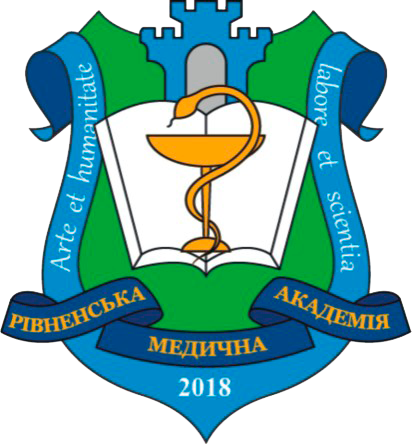THE USE OF INNOVATIVE TECHNOLOGIES IN PHYSICAL THERAPY: THE IMPACT OF ROBOTIC SYSTEMS ON REHABILITATION AFTER INJURIES OF THE MUSCULOSKELETAL SYSTEM
DOI:
https://doi.org/10.32782/health-2025.1.20Keywords:
robotic technologies, rehabilitation, physical disabilities, exoskeleton, trauma, motor skills, innovative technologiesAbstract
Advances in robotics and artificial intelligence have opened up new perspectives for motor rehabilitation, giving hope for more effective and personalized treatment. Robotic systems, from exoskeletons to end-effector-assisted training devices, provide unprecedented levels of precision, repeatability, and adaptability in traditional therapy, promise significant improvements, and provide sensory and motor feedback. They play a crucial role in providing visual, auditory and tactile feedback to patients. More importantly, they allow for controlled and personalized therapeutic exercises adapted to the progress and needs of each patient. This contributes to a more effective individual recovery. The article examines the influence of innovative technologies, in particular robotic systems, on the effectiveness of physical therapy and rehabilitation of patients after injuries to the musculoskeletal system. Modern approaches to the use of exoskeletons, robotic hands, personal assistants, and brain-computer interfaces in motor rehabilitation of upper and lower limbs were studied. The advantages of such technologies are analyzed, including their ability to provide precision movements, individual approach and interactive feedback, and barriers to their implementation are identified, including high cost, the need for staff training, and limited access to equipment. The article provides recommendations for optimizing the use of robotic systems in physical therapy in order to improve treatment results, reduce the duration of rehabilitation, and improve the quality of life of patients. An important aspect is the continuation of research aimed at improving robotic systems, developing strategies for their effective use, and increasing accessibility for various population groups.The successful solution of these tasks will open the way to the transformation of approaches in motor rehabilitation, significantly improve the results of treatment, contribute to the social integration of people with impaired motor functions and increase their quality of life.
References
Assistive Robotics for Upper Limb Physical Rehabilitation: A Systematic Review and Future Prospects/A. Guatibonza et al. Chinese Journal of Mechanical Engineering. 2024. Vol. 37, no. 1. URL: 10.1186/s10033-024-01056-y.
Banyai A. D., Brișan C. Robotics in Physical Rehabilitation: Systematic Review. Healthcare. 2024. Vol. 12, no. 17. P. 1720. URL: 10.3390/healthcare12171720.
Fukui R., Lovegreen W. Robotics in Rehabilitation Medicine: Prosthetics, Exoskeletons, All Else in Rehabilitation Medicine. Robotics in Physical Medicine and Rehabilitation. 2025. P. 65–91. URL: 10.1016/b978-0-323-87865-4.00006-6.
Gonçalves R. S., Carvalho J. C. M. Robot Modeling for Physical Rehabilitation. Robotics. P. 1212–1232. URL: 10.4018/978-1-4666-4607-0.ch058.
Andersen R., Davis S., Scoville C. Rehabilitation of Military Amputees: From Injury to Independence. Orthopedics. 2008. Vol. 31, no. 10. P. 1000–1002. DOI: 10.3928/01477447-20110525-05.
De Cubber G., Schneider F. E. Military Robotics. Encyclopedia of Robotics. Berlin, Heidelberg, 2023. P. 1–16. DOI: 10.1007/978-3-642-41610-1_219-2.
Robotic therapy for phantom limb pain in upper limb amputees / P. W. Snow et al. 2017 International Conference on Rehabilitation Robotics (ICORR), London, 17–20 July 2017. 2017. DOI: 10.1109/icorr.2017.8009383.
Talbot L. A., Brede E., Metter E. J. Psychological and Physical Health in Military Amputees During Rehabilitation: Secondary Analysis of a Randomized Controlled Trial. Military Medicine. 2017. Vol. 182, no. 5. P. e1619-e1624. DOI: 10.7205/milmed-d-16-00328.
Trends of Robotic Systems for Hand Rehabilitation / J. Y. Min et al. Journal of Rehabilitation Welfare Engineering & Assistive Technology. 2023. Vol. 17, no. 4. P. 321–330. DOI: 10.21288/resko.2023.17.4.321.
Wood P., Small C., Mahoney P. Perioperative and early rehabilitation outcomes following osseointegration in UK military amputees. BMJ Military Health. 2019. Vol. 166, no. 5. P. 294–301. DOI: 10.1136/jramc-2019-001185.
Advanced Robotic Therapy Integrated Centers (ARTIC): an international collaboration facilitating the application of rehabilitation technologies / H. J. A. van Hedel et al. Journal of NeuroEngineering and Rehabilitation. 2018. Vol. 15, no. 1. URL: https://doi.org/10.1186/s12984-018-0366-y (date of access: 10.02.2025).





